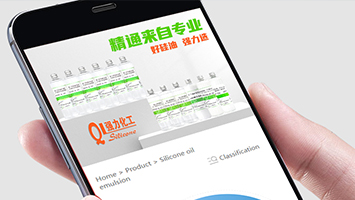I. Viscosity range (25℃, mPa・s)
1. General polyurethane system
Recommended viscosity: 500~3000 mPa・s
Low viscosity (such as 500~1000 mPa・s): suitable for scenarios requiring high fluidity, such as spraying or coating processes of coatings and adhesives, to avoid construction difficulties caused by excessive viscosity.
Medium-high viscosity (such as 1000~3000 mPa・s): suitable for systems such as elastomers and sealing materials that require a certain structural strength, and can balance processability and mechanical properties.
2. Special application scenarios
High weather-resistant coating:
Choose amino silicone oil with a viscosity of 8000~15000 mPa・s to form a dense siloxane film layer, which can improve the coating's resistance to UV aging and hydrophobicity.
Self-healing materials:
Amino silicone oil with viscosity > 10000 mPa・s can achieve micro-crack repair through dynamic reorganization of molecular segments, and is suitable for high-end polyurethane elastomers.
II. Ammonia value range (mmol/g)
1. Conventional modification requirements
Recommended ammonia value: 0.3~0.8 mmol/gLow ammonia value (0.3~0.5 mmol/g): moderate reactivity, suitable for systems requiring mild cross-linking (such as water-based polyurethane emulsions), and can avoid process out of control caused by too fast gelation.
High ammonia value (0.6~0.8 mmol/g): improves the degree of reaction between amino and isocyanate, increases cross-linking density, and is suitable for scenes with high requirements for hardness and solvent resistance (such as industrial protective coatings).
2. Special performance optimization
Ultra-soft elastomer:
Ammonia value of 0.8~1.2 mmol/g can enhance the intermolecular hydrogen bonding effect and give polyurethane excellent flexibility and touch, but it needs to be matched with low viscosity (such as 500~1000 mPa・s) to avoid processing difficulties.
Low yellowing requirements:
Choosing amino silicone oil with an ammonia value of less than 0.3 mmol/g can reduce the risk of yellowing caused by amino oxidation, which is suitable for light-colored coatings or medical polyurethanes.
3. Parameter matching and process recommendations
Synergistic effect of viscosity and ammonia value
High ammonia value + low viscosity: suitable for scenarios that require fast reaction and good fluidity (such as one-component adhesives), but attention should be paid to the increase in internal stress caused by excessive amino groups.
Low ammonia value + high viscosity: suitable for slow reaction systems (such as two-component elastomers), high viscosity can be used to maintain structural stability while avoiding excessive cross-linking.
III. Key points of process control
Prepolymer synthesis:
Amino silicone oil needs to be added after the isocyanate prepolymer is formed to avoid competitive reaction with polyols. For example, first synthesize a prepolymer containing -NCO, and then add amino silicone oil for chain extension.
Catalyst adjustment:
If an organotin catalyst (such as dibutyltin dilaurate) is used, the amount of catalyst should be reduced in a high ammonia value system to prevent gelation caused by excessive reaction.
Compatibility improvement:
The compatibility of siloxane and polyurethane resin is limited, which can be optimized by the following methods:
Add silane coupling agent (such as 550) as a compatibilizer;
Select hydroxyl-terminated siloxane and aminosiloxane to balance reactivity and compatibility.
IV. Supplier product reference
Typical product parameters:
Qiangli Chemical QL-2215: ammonia value 0.6 mmol/g, viscosity 5000~15000 mPa・s, suitable for high elastic polyurethane.
Chemical reagent grade amino silicone oil: viscosity range 700~15000 mPa・s, ammonia value 0.15~0.3 mmol/g, suitable for laboratory formula development.
Qiangli Chemical QL-2211~2253: ammonia value 0.15~0.9 mmol/g, viscosity coverage 600~15000 mPa・s, suitable for industrial scale production.




